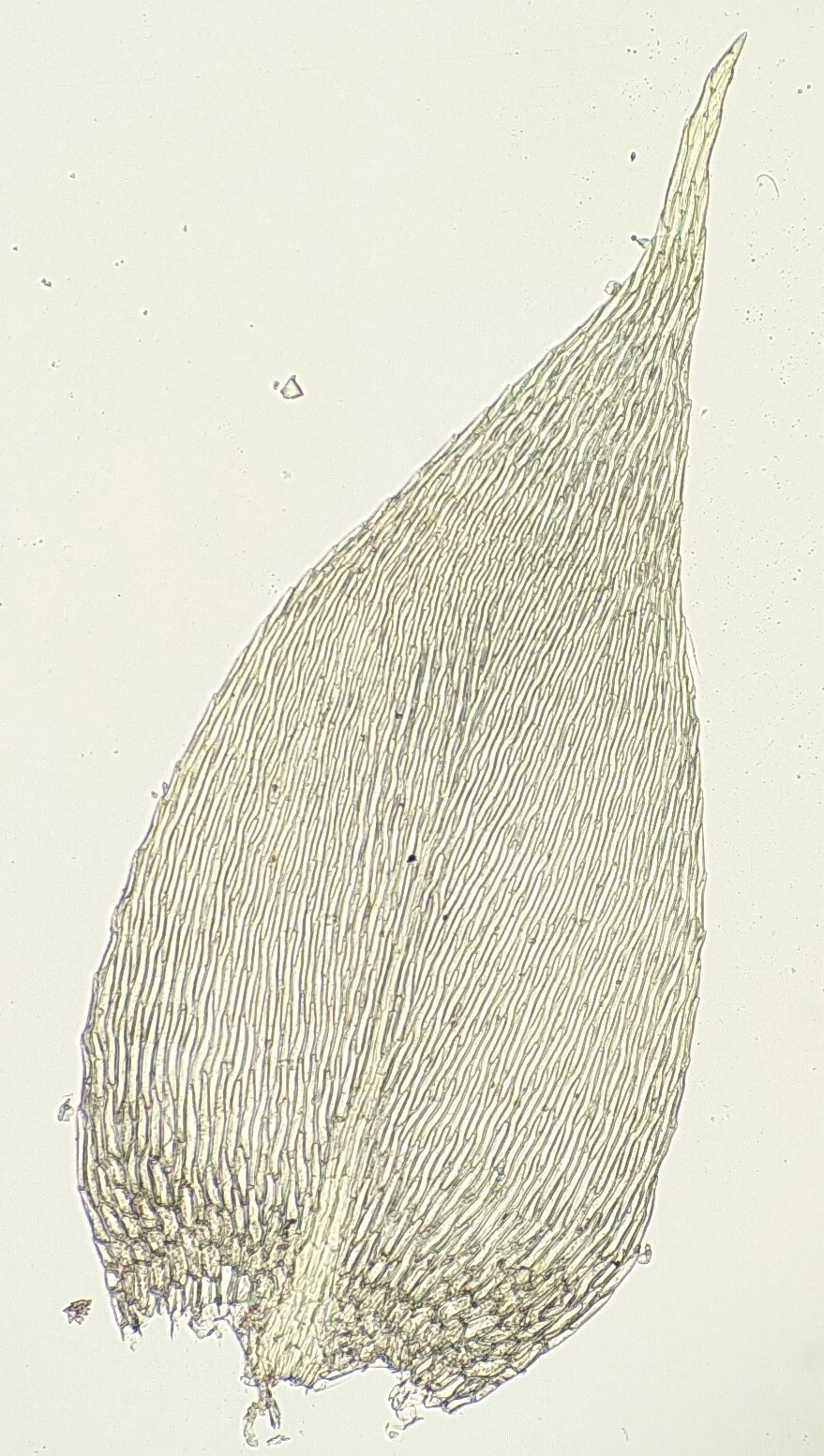Brachythecium
Autoicous or dioicous. Asexual propagules absent. Mats on soil, rocks, logs and tree trunks. Stems creeping to ascending, irregularly or sometimes regularly pinnately branched, with rhizoids in fascicles arising basal to leaf bases; paraphyllia absent; central strand present. Leaves differentiated by size and shape with branch leaves smaller and narrower than stem leaves, lanceolate to broadly ovate or triangular, erect and appressed to wide-spreading when moist, scarcely altered when dry, arranged around stem and facing all directions, falcate-secund or rarely complanate, imbricate or rarely somewhat spaced, plicate or rarely not plicate, sometimes long-decurrent; apex obtuse, apiculate, acute or acuminate, occasionally piliferous; costa extending near midleaf to subpercurrent, ending in a spine or not; margin entire, serrulate or serrate, plane or recurved; laminal cells linear, shorter at base, smooth or rarely prorate; alar cells usually differentiated, oblate or quadrate to rectangular, occasionally inflated, forming a well-defined group or not, sometimes ascending along margin. Seta rough or smooth. Capsule inclined to horizontal or occasionally erect (not in Victoria), straight (not in Victoria) or curved, ovoid, obloid or cylindric, with an annulus. Calyptra cucullate, smooth, glabrous. Operculum conic, sometimes rostellate (not in Victoria). Peristome double; endostome with segments about equal in height to exostome, with a high basal membrane or rarely reduced (not in Victoria) with basal membrane c ¼ of segments height; cilia present and well-developed, rarely absent (not in Victoria) or rudimentary (not in Victoria).
Cosmopolitan with around 90 species; six species in Victoria.
The circumscription of Brachythecium presented here is narrower than treated in the last revision of Brachytheciaceae in Australia by Hedenäs (2002) and instead follows Ignatov & Huttunen (2002) who separated some species groups as the separate genera Brachytheciastrum (in Victoria B. paradoxum (Hook.f & Wilson) A.Jaeger) and Sciuro-hypnum (in Victoria B. plumosum (Hedw.) Schim.). This separation is supported by numerous molecular phylogenies (see Brachytheciastrum and Sciuro-hypnum profiles).
 Spinning
SpinningHedenäs, L. (1996). Taxonomic and nomenclatural notes on Australian Brachytheciaceae (Musci). Nova Hedwigia 62: 451–465.
Ignatov, M.S.; Huttunen, S. (2002). Brachytheciaceae (Bryophyta) – a family of sibling genera. Arctoa 11: 245–296.




